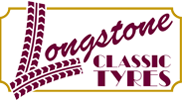-
- Daimler 104 Tyres
- Daimler Conquest Tyres
- Daimler Consort Tyres
- Daimler Dart Tyres
- Daimler DB18 Tyres
- Daimler Double-Six Tyres
- Daimler DS420 Limousine Tyres
- Daimler Majestic Tyres
- Daimler Majestic Major Tyres
- Daimler Regency Tyres
- Daimler Sovereign Tyres
- Daimler Special Sports Tyres
- Daimler Vanden Plas Tyres
- Daimler V8 Saloon Tyres
- Daimler XJ6 Tyres
- Daimler XJ40 Tyres
Daimler Tyres
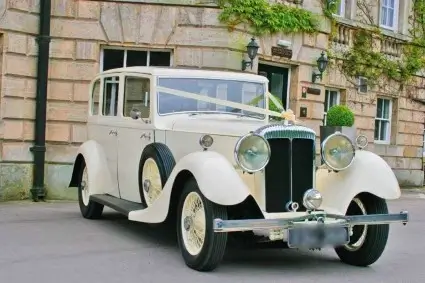
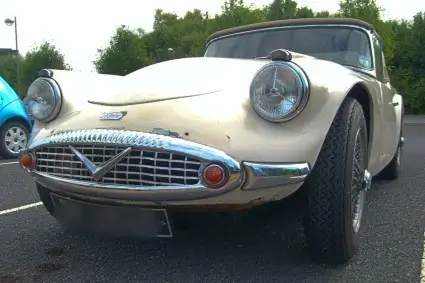
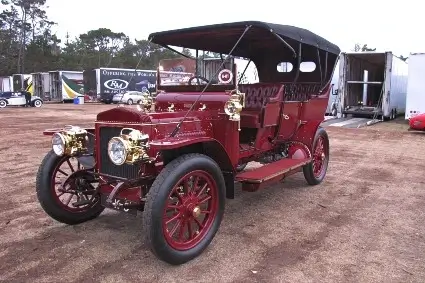
Classic Daimler Tyres
On the following pages, Longstone Classic Tyres give classic tyre fitment recommendations for Daimler cars.
Daimler Sovereign Tyres
The Daimler Sovereign fitted 205/70-15 tyres. There are a variety of tyres available in the size. Including the original ER/70VR15 Dunlop SP Sport Aquajet. We would however, recommend the 205/70 VR 15 Michelin XWX tyre.
Daimler Double Six Tyres
The Daimler double six fitted 215/70-15 tyres, of which we would recommend fitting 215/70 VR 15 Michelin XWX tyre.
Daimler XJ40 Tyres
The Daimler version of the Jaguar XJ40 fitted 390mm wheels with the tyre 220/65 VR 390 Avon CR3 of which we currently stock the Avon CR39.
In 1990, the XJ40 moved back on to 15” wheels and fitted 225/65 WR 15 PIRELLI CINTURATO P5 tyre.
01302 711 123
or
Email: sales@longstonetyres.co.uk
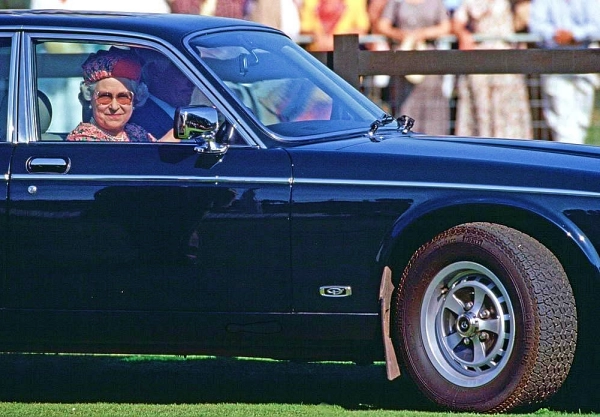
1991 Daimler Double Six on PIRELLI P5 Tyres - Approved by the Queen
Daimler History
Many of Coventry's renowned automobile marques have long since vanished, including Daimler, recognised as Britain's first car manufacturer. Gottlieb Daimler (1834-1900), who was born in Schorndorf/Wurttemberg and is permanently connected with the creation of the car engine, is the originator of the Daimler moniker.
In 1885, Daimler joined up with Wilhelm Maybach to produce the first engines intended exclusively for motor vehicles, inspired by British technology. The engines that were designed were also particularly suited to motorboats.
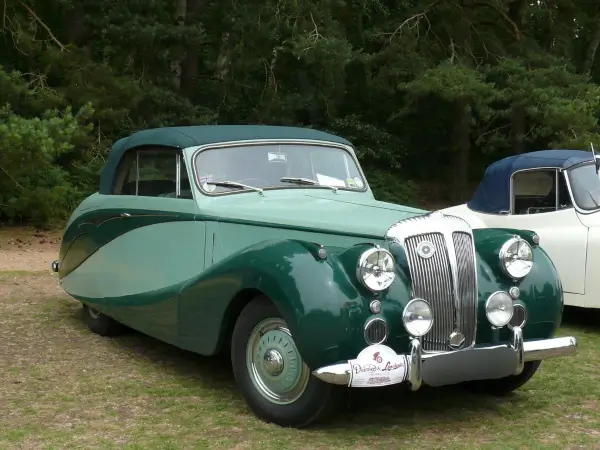
Daimler DB18
Frederick Simms (1863-1944), an Englishman born in Hamburg, was looking for an engine for an overhead railcar he was building when he met Daimler and saw the possibilities for employing his and Maybach's engine in Britain. After acquiring the patent rights, he established The Daimler Motor Syndicate Ltd in 1893. Simms began producing boats with the Daimler engine on Eel Pie Island in Twickenham, on the Thames.
In 1895, a foresighted businessman named Harry J Lawson saw an opportunity to construct vehicles utilising the engine. Lawson was concerned about the now-apparently absurd legislation that required any motor vehicle to have someone walking in front of it waving a red flag. Lawson, a throwback to the days of steam carriages, had contacts in high places and was able to get the rule overturned in 1896, allowing cars to move at 12mph.
Lawson established the Daimler Motor Company in the same year after acquiring the rights to make Daimler engines. It began as a complicated corporate arrangement including Lawson, Simms, Daimler, and the German corporation Daimler Motoren Gesellschaft (DMG). It was registered in London, although it was manufactured in Coventry.
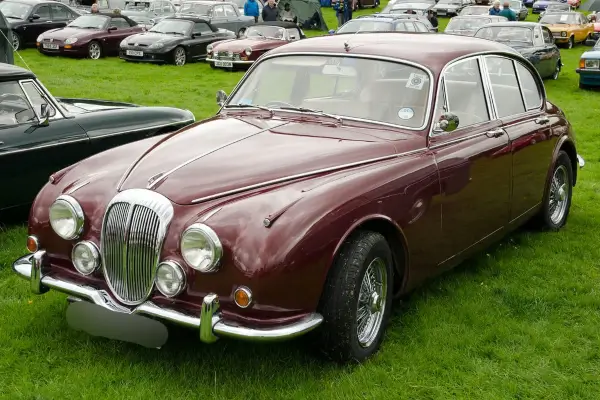
Daimler V8
Production began slowly, with Lawson first importing automobiles from Europe, but the first vehicles left the plant in early 1897. In the first year, 89 automobiles were manufactured. The early cars featured a steering handle, but these were soon replaced by steering wheels. In October 1897, Lawson resigned from the Daimler board and was replaced by Henry Sturmey. Sturmey made history by being the first person to drive from John O'Groats to Land's End in an automobile (his own Daimler), making the route in the same month.
Daimler, although being a pioneer, had its share of financial difficulties. Following a reorganisation of the corporation by EH Bayley and Edward Jenkinson, Sturmey resigned as chairman in 1899. Simms, as a director of DMG, offered a merger between the Daimler Motor Firm in Coventry and DMG in Cannstatt in the mid-1900s, but the reorganised company declined the idea. Lawson was convicted of fraud and condemned to a year of hard labour in 1904. That year, the corporation was reorganised again, with the prior company being closed up and a new one founded.
In 1910, Daimler was purchased by the Birmingham Small Arms Company (BSA), which also manufactured automobiles. Daimler had a payroll of 4,116 workers and 418 employees at the time. In 1933, BSA purchased the Lanchester Motor Company and merged it with Daimler. Daimler automobiles became immensely popular among the higher levels of British society, including royalty, and competed with Rolls Royce for supremacy. King Edward VII was an early supporter, and the business was granted a Royal Warrant to furnish automobiles to the king in 1902, a privilege it had until the 1950s, when Rolls Royce took over.
The Coventry automobile manufacturer prospered in the early twentieth century. Its operations were then expanded into a number of other industries, including buses, commercial vehicles, aviation engines, and military vehicles. The Daimler Double Six Sports Saloon, manufactured in the 1930s, was one of its most renowned vehicles. With its exaggerated dimensions, notably its excessively tall hood, it resembled a cartoon car. Daimler Double Six production began in 1926 and lasted until 1937. It is estimated that 75 were built.
The model was also used as a foundation for more sports-oriented fixed head and convertible cars, such as the Daimler Double Six Drophead Coupe. Winston Churchill famously drove a Drophead Coupe. Daimler had intended to construct 23 DS18 Drophead Coupes before the onset of World War Two, but production was halted. Only eight chassis were ever completed, with five of them destroyed during the Coventry Blitz in November 1940.
Churchill was lent one for his electoral campaigns in 1944 and 1949. Daimler attempted to widen its appeal with a larger range of automobiles in the 1950s. Its model lineup included both compact and big luxury vehicles. In addition to discontinuing Lanchester production, the business produced and sold a sports vehicle, as well as a high-performance luxury saloon and limousine.
The Conquest Roadster, the first Daimler sports vehicle in decades, was introduced in 1954, along with the Century saloon variant. At the end of the decade, the Daimler SP250, also known as the Daimler Dart in the UK, debuted as a new fibreglass-bodied sports vehicle. BSA sold Daimler to Jaguar Cars in 1960, who maintained the Daimler line. Jaguar was eventually absorbed by the British Motor Corporation in 1966 and British Leyland in 1968.
Except for the 1968 - 1992 Daimler DS420 Limousine, Daimler became an upmarket trim level for Jaguar automobiles under these businesses. Daimler's allure faded in subsequent years, with the cars becoming nothing more than rebadged Jaguars, albeit the aforementioned Limousine (favourite of Lord Mayors around the UK) continued to carry the flag.
When Jaguar was purchased by Ford in 1989, the Daimler name was transferred, but the US automaker discontinued using the Daimler name. In 2008, Ford sold Jaguar and Land Rover to Tata, and the Daimler brand was also transferred. As a result, Tata/Jaguar Land Rover currently owns Daimler.
